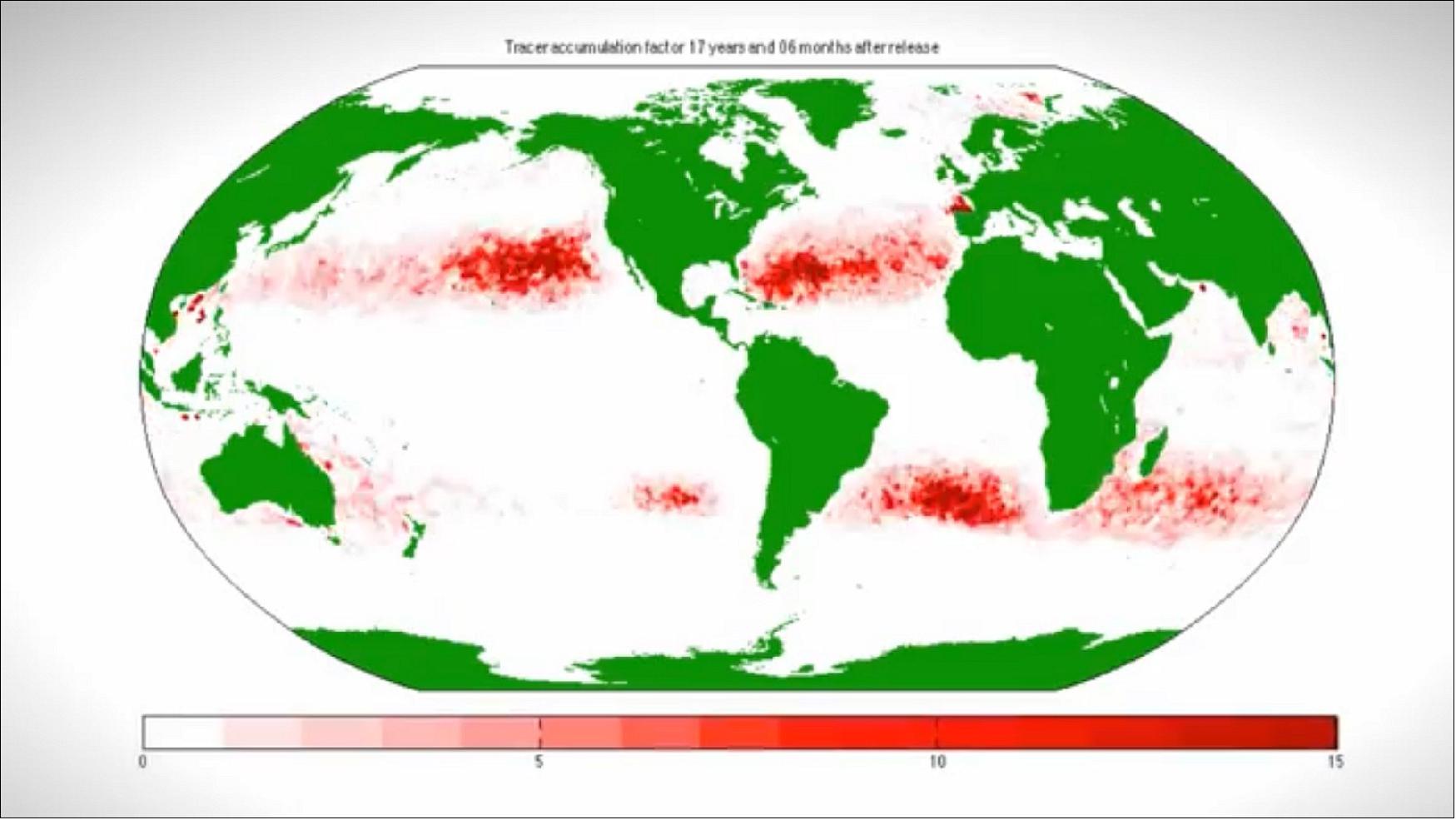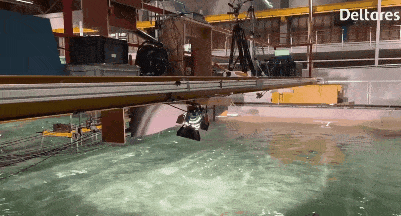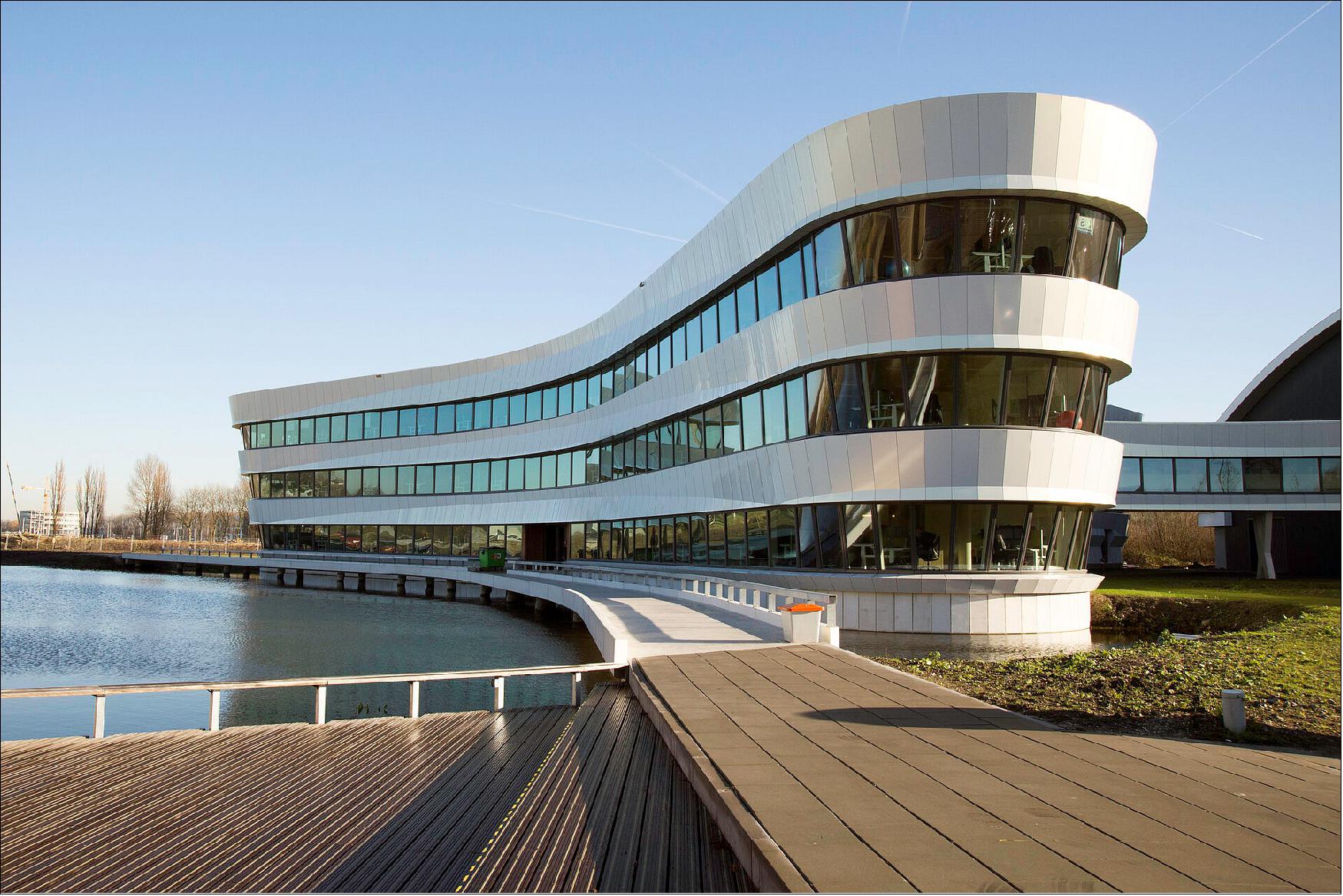Marine Plastic
Applications
Marine Plastic Litter Detection with Satellites - an Urgent Objective for the Future
February 2022: Could satellites be able to help track and map the marine plastic waste befouling our oceans? Research teams from across Europe returned to a Netherlands-based ocean wave test facility to try and detect floating plastic. Using a suite of microwave and optical instruments, the researchers are assessing if orbital monitoring of plastic might be practical in the future. 1)
"What we can say is that some of our instruments do detect increases in signal levels when marine plastic waste is present compared to when it isn't," explains ESA antenna engineer Peter de Maagt, overseeing the campaign.
"This result represents a proof of concept that this approach is definitely worth further investigating. This is much more than I hoped for when we first began testing last year, but we've gone through a steep learning curve during our work here.

"At the same time we can't say for sure if we are detecting the plastic directly, or the signals are due to some related factor, such as indentations in the water surface caused by the floating plastic, or small ripples. What needs to come next is follow-up testing in the actual marine environment, using aircraft or drones, and if that goes well then eventually an experimental space mission."

The best estimate is that an average 10 million tons of plastic enter the ocean annually – equivalent to a fresh truckload of plastic dumped every minute – but researchers only know what happens to about 1% of it. Satellite monitoring might in the future help track its extent, and see where it goes, if such a technique can be proven to work in practice.
The test campaign took place at the Deltares research institute in Delft in the Netherlands, inside its mammoth Atlantic Basin Facility. This one of a kind facility – 75 m long 9 m wide, half the size of an Olympic swimming pool – employs wave generators to recreate realistic deep ocean waves.

"We use the Atlantic Basin Facility to simulate the deep ocean environment as realistically as we can for these experiments," explains Deltares flow expert Anton de Fockert. "Normally we use this test facility to tackle the kind of hydraulic problems that cannot be solved using computer models. This includes, for example, testing bed protection for offshore wind farms and tidal energy converters as well as hydraulic structures.

"From my perspective this current test campaign is unique, because it involves so many different groups with varied expertise, from ocean waves to microwaves, optics to plastic waste – as well as space. It's a follow-on from the previous test campaign we ran last year, except this time we're using smaller amounts of plastics, to try and quantify detection thresholds and trying out some new monitoring approaches."
Teams from the Institute for Telecommunications in Portugal and the University of Stirling in Scotland are employing radar remote sensing.. A combined group from the University of Leiden, the University of Oldenburg in Germany and the ITC Faculty of Geo-Information Science and Earth Observation of the University of Twente have deployed optical instrumentation.
Meanwhile a combined team from the University of Alberta in Canada and the Technical University Delft in the Netherlands are performing fundamental physic analyses – including attempting to better quantify the wave-damping effect of marine plastic litter, which might be harnessed to estimate plastic concentrations in the future.

This project is part of a larger OSIP campaign on marine plastic litter, supported through ESA's Discovery and Preparation programme, underseeing basic research that lays the ground for future Agency missions.
Figure 6: Planet Aqua: Solutions from Space for Clean Water. Water is life, on Earth and in space. Dutch ESA astronaut André Kuipers recounts his experience living in space for 204 days, and his time looking back on the blue face of ‘Planet Aqua', comparing notes with divers about what is going on beneath the waves. He goes on to explore how space technology is being used for water management, from orbital tracking of water quality and pollution to spacecraft-grade recycling systems deployed down on the ground, as well as ambitious efforts to identify marine plastic litter using satellites. Produced for SIWI World Water Week with the support of the Netherlands Ministry of Foreign Affairs (video credit: ESA)
1) "ESA tests marine plastic detection in ocean wave facility," ESA Enabling & Support, 4 February 2022, URL: https://www.esa.int/Enabling_Support/Space_Engineering_Technology
/ESA_tests_marine_plastic_detection_in_ocean_wave_facility
2) "Monitoring marine litter from space," ESA, 10 August 2021, URL: https://www.esa.int/Enabling_Support/Space_Engineering_Technology
/ESA_tests_marine_plastic_detection_in_ocean_wave_facility